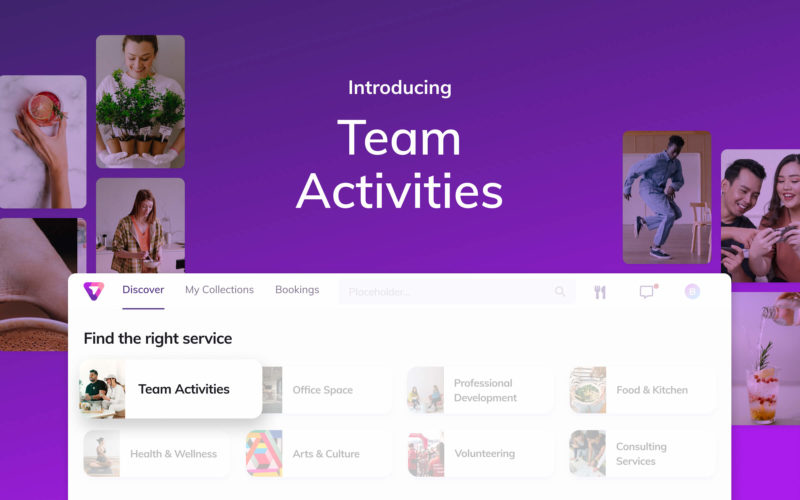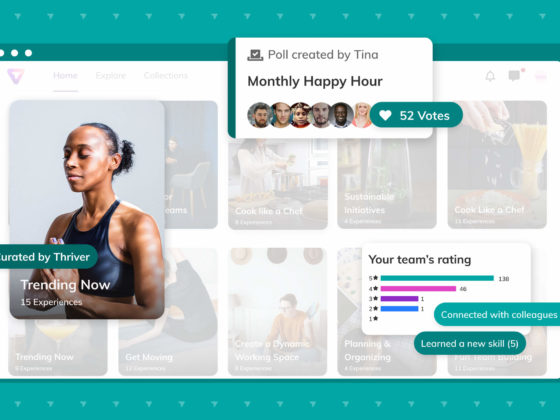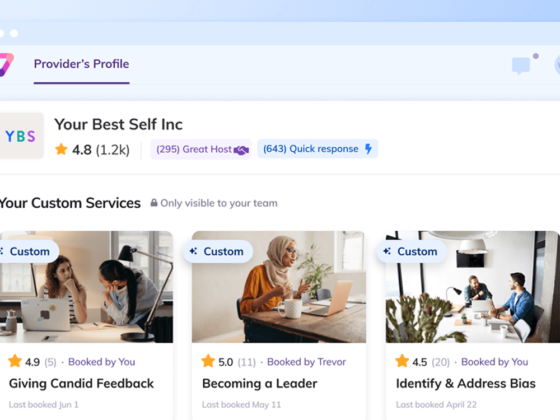What do Canada’s Top 100 Employers all have in common? They’ve each mastered their cultures to holistically address employee needs like mental and physical well-being, opportunities for growth and advancement, and teamwork and collaboration. Your organization doesn’t have to make it to this list to be a great place to work; it just needs to maintain a people-centred approach to culture-building. Today, we’re exploring our Team Activities category, that being how to maximize overall performance and deepen coworker bonds.
Don’t forget: as you keep developing your programs, you can always refer back to our earlier tips and resources about professional development, office design, and office catering!
Powerful Statistics that Prove Workplace Collaboration Matters
We know, we know: teamwork isn’t exactly a revolutionary idea. But there’s a reason why leadership conferences, HR consulting firms, and other experts keep harping on about it. The way colleagues interact with each other has an explosive impact on individual and overall company well-being! Take a look at the results of these studies all conducted within the last decade:

75% of workers born between the 1980s and early 2000s (the modern workforce) view collaboration as essential.
- A study by Queens University of Charlotte predicted that 75% of workers born between the 1980s and early 2000s (a.k.a the modern workforce) view collaboration as essential
- 57% of executives surveyed by Deloitte cited identifying and exploiting new business opportunities as a critical benefit of increased collaboration
- 86% of company leaders believe ineffective team communication is a major cause of failed workplaces
- 54% of employees surveyed by Gusto admitted to staying at jobs no longer in their best interests due to a strong sense of community and belonging
- Contact outside the workplace is responsible for 50% of the positive changes in communication patterns
There are hundreds of other supporting stats, but these few reveal several benefits of using creative methods to encourage positive team interactions, including increased engagement and talent retention, supercharged creativity, and enhanced allyship.
5 Steps to Establish Your Team-Building Program
While sprinkling team-bonding functions here and there on your company calendar has its benefits, doing so has limited impact. Instead, create a system that strategically helps you choose activities and events and work them into your organization’s ecosystem. This section covers a quick guide to building your program’s foundation and nurturing it over time, with a focus on FIVE core questions:
- WHY are you doing this program?
- WHAT activities will you choose?
- WHO will be involved?
- WHERE will these activities take place?
- WHEN will these activities occur?
Step One: Set Up a Group of Overseers
Rolling out a new program involves hard work and many moving parts, so be sure to guard against overwhelm and burnout from the get-go. Before you do anything else, gather a group of leaders in charge of brainstorming ideas, implementing decisions, and supervising the outcomes. There’s no need to be a one-person band!
Step Two: Revisit the Big Picture
Every new initiative should tie back to your company’s global vision and goals to help you make focused decisions and effectively communicate the initiative’s importance to your colleagues. This is also a great way to come up with ideas for what team activities to choose. For example, every month, Architech plans new and recurring programs around its “Think Big” themes, which has been a highly effective approach for keeping everyone aligned with its vision, mission and purpose.
Step Three: Consider Your Budget
Sit down with your finance department and decide on a realistic amount to invest in your program. You don’t have to fly everyone to Spain each year; there are plenty of low-cost yet potent options that can cater to everyone’s needs and preferences. We recommend incrementally increasing the budget percentage allocated to these activities at a manageable pace, whether it’s quarterly, semi-annually, or annually. Remember to focus on progress, not perfection; you can always start small and build up over time.
Step Four: Choose the Right Team Activities
Now’s a great time to gather feedback from your coworkers. Marrying this information with your overall big picture (step one) will help you develop the perfect program mix for your organization. Create a survey to ask employees simple questions like:
- How do they want to have fun?
- What skills do they want to develop?
- What learning styles and personality types do they have?
- Which causes are they passionate about?
Also, don’t forget to consider how your work model may evolve over time, especially if the plan is to transition from WFH to in-office collaboration. You may want to design activities that will suit both onsite and remote formats!
Step Five: Settle on the Scale and Frequency
The larger and more complex your company, the more comprehensive your program needs to be. For example, some events will be on an organizational scale (such as a summer picnic or annual general meeting), while others will be more department or team-specific (e.g. job-related training sessions).
Lastly, whip out every relevant calendar (company-wide or department and team-specific) and block out times to prioritize ongoing learning and team togetherness.
Thriver’s New Team Activities Category Covers the Basics & Beyond
The team activities you decide on will depend on your company’s unique situation, but we recommend choosing a variety that hits three primary target areas:
Bonding & Fellowship
The earlier statistics demonstrate how important it is for teams to discover and nurture common interests in a relaxed, non-work setting. Create opportunities for this with events arranged purely for fun, relaxation and entertainment, like game nights, cooking classes, arts and crafts mini-courses, and exercise sessions.
Generosity & Giving Back
Community involvement is one of the eight factors Mediacorp considered when compiling the “Canada’s Top 100 Employers” list. This clearly shows that employees value opportunities to make a difference to others outside of the office, preferably in a team setting.
Learning & Development
51% of millennials and 47% of Gen-Zers worldwide value learning new soft and technical skills to improve their work performance. Companies that invest in professional development keep their employees happy and empower them to outperform the competition. On top of job-related training, set up sessions to teach about leadership, stress management, diversity and inclusion, and other relationship-building soft skills.
Looking For More?
Explore our team activities category for our entire collection of curated ideas and experiences to encourage companionship, inclusivity and progress toward your overall company goals!








